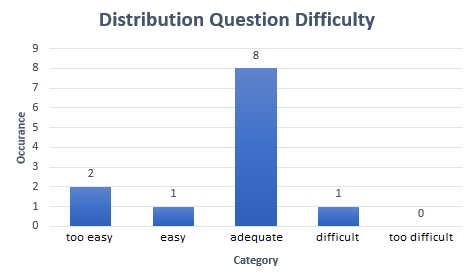Synopsis A method is presented, where students independently create new and quality-assured learning materials to accompany online lectures.
Intro
This concept shows a method developed in the summer semester 2020 in which students independently create new and quality-assured learning materials to accompany online lectures. The aim is to support students to absorb the online lecture content better, to work on it independently and let students to experience their own progress and success immediately. During the summer semester 2020, students created over 57 online quizzes with more than 350 questions using this method. The quizzes use modern and motivating gamification approaches and can be played on all types of devices, such as desktops, tablets and smartphones. They were created parallel to the my online lectures and playfully support self-learning of important lecture contents. The method was implemented in three modules of the Bachelor’s degree in Business Information Systems. At the same time, it was applied in the master’s programs in Digital Business Engineering and Digital Business Management to test its use in other courses and to research various evaluation metrics for a continuous improvement process. With this type of learning, i.e. through independently created new learning content, students achieve a higher learning ability. The sustainable contribution is a highly efficient and tested method for creating supporting and quality-assured materials for teaching.
Current Situation and Problem Formulation
Students in online lectures need additional channels in addition to the presentation of the content on the screen by the lecturer. Interactions and learning groups that otherwise arise during face-to-face events are difficult to motivate by addressing them alone. The use of interactive offers such as multiple choice tests and quizzes, which can be used by students for the follow-up and review of the lecture content online, is recommended by various lecturers with long-term experience in online teaching and didactics.
Problem: The creation of such offers, especially for several lectures, can create an overload for lecturers who simultaneously switch from face-to-face to online lectures.
Innovation
Existing online platforms can be used to create multiple choice tests and online quizzes. The gamification approaches contained therein can also be used to promote the motivation of participating students. Students who take a test or quiz receive immediate feedback on their success in the form of points and get an impression of their progress.
The method is implemented in the form of student projects. What is new is that a group of students separate from the participants act as creators of tests and quizzes and, at the same time, use the platform to receive feedback on the success and demands of the tests and quizzes created. The creators are embedded in a control loop for quality improvement. In addition, regular standardized surveys determine the scope and completeness of the content. The following figure illustrates the process.

The activities, especially those of the creators, must be carried out regularly at short intervals in order to make small-scale improvements. The lecturer works in an advisory and supervisory role with the creators. It introduces the participating students to the online tests and quizzes through announcements in the online lectures and in the learning management system. The result is a high level of coverage of the lecture content through additional downstream interactive online offers, accompanied by a guaranteed quality and created by students.
Technical equipment for participating in online courses is available for over 95% of the students in the business informatics course. As a consequence, this project can be carried out with students.
Implementation
The method for the rapid development of learning instruments is implemented in agile student projects and applied for parallel lectures. Since the semester started in the summer semester 2020, six students from the fourth and fifth semesters have been working on the project as part of a semester project in the Bachelor’s degree in Business Informatics. These students, referred to as creators, develop the content of the online tests and quizzes for freshmen.
As a platform for creating online quizzes and MC tests we use Kahoot!. Kahoot! is a game-based learning platform with almost 50 million participants.
The process consists of four defined activities by the creator students, carried out repeatedly over a short period of two weeks. A two-week period represents a sprint with the activities in the table below:
| Activity | Description |
|---|---|
| 1. Setup | Creating a quiz game, MC test or similar for a lecture. Lecturer announces the current topic to the creators and makes documents available. The creators extract questions independently. |
| 2. Experiment | Lecturer hands over the quiz to the students participating in the lecture. In the meantime, the creators collect the data of the metrics on success, duration and question understanding / difficulty. |
| 3. Validation | Creators evaluate collected data in statistics about the students’ performance in the games. Typical questions are: How good were the quiz takers? Was the quiz too easy / too difficult? A standardized survey is carried out as feedback to check the quiz for content coverage or errors. |
| 4. Improvement | As a result of the previous activity, specific adjustments to the questions can be determined and errors can be corrected. These changes will be implemented in the next sprint. |
The project is planned and carried out in an agile manner using the Trello. The links to the games, as soon as created, are put into a Trello card and indicate completion.
Results
The student teams are continuously adding to a results document with the following content:
- Possible questions and answers in a quiz
- the values of the key figures on participants, aspiration and player strength
- the adjustments described as a result of the key figures
The following figures show typical performance statistics as they are documented at the end of a sprint.

